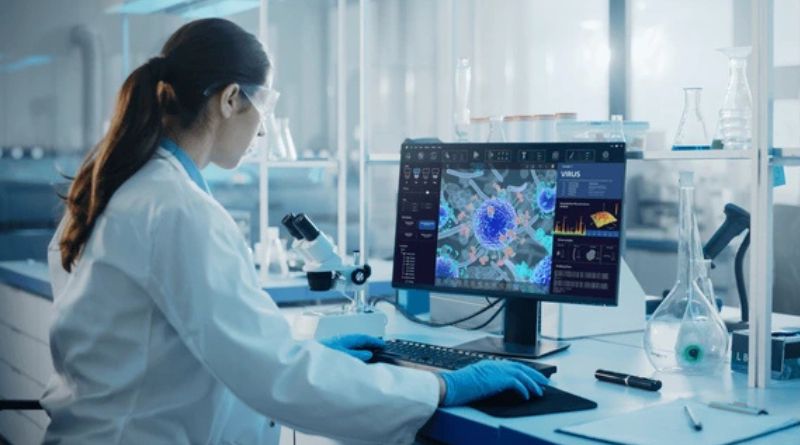Key Takeaways
- Laboratory equipment underpins advancements in healthcare, industry, and academia, establishing the backbone for modern progress.
- Research led by well-equipped labs directly influences far-reaching solutions, ranging from medical innovations to new materials and consumer products.
- Continuous technological updates, sustainability initiatives, and automation redefine traditional laboratory roles and outcomes.
- Safety, accuracy, and collaborative teamwork are essential to harnessing the full potential of laboratory environments.
- Laboratory breakthroughs have consequences far beyond their walls, shaping the future of society through innovation.
Table of Contents
- Why Laboratory Equipment Matters
- From Labs to Life: Surprising Contributions
- Emerging Lab Technologies Driving Progress
- The Role of Sustainability and Green Labs
- How Automation Unlocks Efficiency
- Ensuring Accuracy: Best Practices in Handling
- Safety Considerations in the Laboratory
- Collaboration: Labs and Industry Working Together
- Looking Ahead: The Future of Laboratory Innovation
Why Laboratory Equipment Matters
The quality and reliability of laboratory equipment primarily determine the success and momentum of scientific research. In a typical research laboratory, advanced spectrometers, autoclaves, precision balances, and ultra-low freezers run daily, supporting ground-breaking experiments and daily diagnostics. When even a single device functions below optimal standards, it can compromise everything from experimental reproducibility to the validity of test results. Recognizing this, services specializing in laboratory equipment repair Delaware are integral to ensuring steady progress. Quick, skilled interventions enable teams to maintain their research schedules, avoid costly delays, and deliver innovations that inform medicine, energy, food safety, and more. Consider the ripple effects when lab equipment malfunctions—entire research timelines can be thrown off, funding may be jeopardized, and crucial discoveries can face setbacks. Downtime interrupts workflows and can result in repeat experiments, wasted materials, and diminished morale. This is why maintenance and timely repairs are a critical, if often unsung, component of scientific advancement. Behind every discovery or invention we hear about, there’s usually a fully operational lab—often with support mechanisms like specialized repair teams—working tirelessly behind the scenes.
From Labs to Life: Surprising Contributions
The influence of laboratory innovation is visible in countless aspects of modern living. Technologies and protocols refined in research environments regularly find their way into items as varied as contact lenses, water purifiers, solar panels, and high-speed data processors. These leaps are not always immediately apparent to the end user, but the seamless functioning of everyday life owes a debt to lab-based discoveries. Advances in diagnostic methods—for instance, rapid genetic sequencing—were first harnessed to save lives in hospitals but soon fueled growth in wearable biosensors and even the microchips that power smartphones. The process of “bench to application” is sometimes unpredictable. Take the example of synthetic polymers developed through a string of chemical experiments. They have become the backbone of modern packaging and countless consumer electronics. Similarly, food scientists have used laboratory models and precision instruments to craft safer preservatives and enhance flavors, benefiting millions globally. Behind these developments is a recurring theme: the crucial role of robust, meticulously maintained lab equipment, without which translation from research to tangible benefit wouldn’t happen at this speed or scale.
Emerging Lab Technologies Driving Progress
The evolution of laboratory instrumentation over the last decade has drastically reshaped scientific capabilities and expectations. Tools such as next-generation sequencers, real-time PCR machines, and flexible microfluidic chips empower researchers to ask—and answer—questions that were previously out of reach. These advances drive incremental progress and paradigm shifts in genomics, environmental analysis, and pharmaceutical development. Recent strides have also made lab technologies more accessible and portable. Compact mass spectrometers, smartphone-controlled incubators, and interconnected devices for sample tracking represent a new norm of efficiency and accuracy. Automation is also expanding rapidly, with robotics now handling compound screening, pipetting tasks, and repetitive sampling with minimal supervision. These comprehensive upgrades ensure that more data is produced with fewer errors, accelerating discovery timelines and allowing scientists to pivot quickly as new questions arise.
The Role of Sustainability and Green Labs
With global attention shifting toward environmental stewardship, laboratories are no exception in the push for greener, cleaner operations. It’s well documented that labs, while essential for progress, consume vast amounts of energy and materials. The sustainability shift has included small procedural changes and large-scale structural improvements. Labs are introducing multi-tiered recycling schemes, using LED lighting, refining fume hood operation, and staggering equipment schedules to reduce energy demand. In many progressive research facilities, single-use plastics are being replaced with reusable glassware, and efforts are underway to design experiments that use fewer harmful reagents. Training scientists in eco-friendly best practices and investing in energy-efficient devices means that research excellence does not have to come at the expense of sustainability. These tangible steps help minimize environmental footprints while reinforcing safety and preserving funds for critical research.
How Automation Unlocks Efficiency
Modern laboratories are as much about intelligent automation as manual expertise. Robotic pipetting systems and automated high-throughput analyzers are now standard in biomedical and chemical labs, executing complex protocols quickly and precisely. Automation reduces repetitive strain for scientists and ensures that studies run with minimal risk of manual error, producing consistent and reproducible datasets. Digital sample management and IoT connectivity allow real-time feedback on everything from freezer temperatures to the location of critical reagents. This digitalization does not replace scientists; it allows them to focus on designing better experiments, interpreting results, and driving greater innovation. With automation, labs can tackle larger project scopes, pivot rapidly between research priorities, and scale promising discoveries for industrial or clinical use at unprecedented speeds.
Ensuring Accuracy: Best Practices in Handling
- Routine calibration of devices guarantees instruments deliver reliable results throughout their operating life. This consistency underpins credible research.
- Meticulous documentation ensures traceability of every reagent, procedure, and sample, making it possible to troubleshoot or replicate findings when needed.
- Consistency in storage protocols, such as precise temperature control, protects sensitive samples from degradation and data loss.
- Scheduled preventive maintenance logs minimize surprise breakdowns, keeping experiments on track and budgets intact.
These habits, while simple, are non-negotiable for rigorous science. Overlooking them can lead to immediate project setbacks and the potential invalidation of months of work if findings cannot be repeated. By embedding these practices as standard operating procedures, labs ensure their results stand up to internal and external scrutiny—an ever-more-important factor in collaborative and interdisciplinary research.
Safety Considerations in the Laboratory
Safety in the lab supports every other aspect of research integrity. Personal protective equipment and clear signage become a second layer of invisible support, protecting researchers from infectious agents, chemical burns, or cuts from sharp objects. Hazard assessments are more than a paper exercise; they are a mindset that empowers scientists to spot and mitigate risks before incidents occur. Comprehensive training and regular emergency drills ensure everyone knows what to do when seconds matter—whether responding to a chemical spill or an equipment malfunction. Research shows that a robust safety culture lowers accident rates and often improves teamwork and morale, reinforcing a sense of shared responsibility vital to complex experiments and long-term initiatives.
Collaboration: Labs and Industry Working Together
The vast benefits of collaboration between research laboratories and private industry are fully displayed in pharmaceuticals, renewable energy, and food science. By pooling expertise and technical resources, universities and commercial partners tackle broad challenges with speed and depth that cannot be achieved alone. Projects such as the rapid development of COVID-19 vaccines highlight how pivotal such partnerships can be, allowing a cross-pollination of ideas from basic science to large-scale production. These collaborations also provide valuable training grounds. For the next generation of innovators, Young scientists get hands-on experience and exposure to real-world pressures while industry partners access creative, research-driven solutions. The result is a virtuous cycle: breakthroughs move from lab bench to market shelves quicker, fueled by networks of mutually supportive professionals.
Looking Ahead: The Future of Laboratory Innovation
Laboratory innovation is at the heart of health, environment, engineering, and beyond progress. With continuing investments in the latest technologies, eco-friendly practices, and collaborative structures, modern labs lay the foundation for the next wave of solutions to global challenges. Whether it’s tackling antibiotic resistance, creating biodegradable plastics, or unlocking new renewable energy sources, the work done in labs today will shape the realities of tomorrow. As technology and teamwork evolve, the world can expect even more sophisticated breakthroughs powered by robust, responsive laboratory environments. The best-equipped and best-managed labs, supported by expert service and direct collaboration with industry, will keep driving the unexpected leaps that transform lives across the globe.






